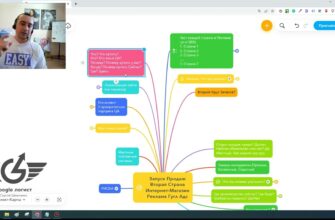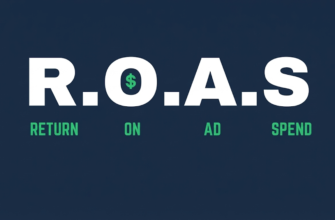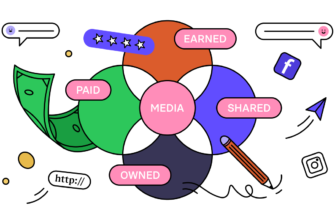- Why it is necessary to leave two language versions of the feed
- Detailed market analysis of the need for two feeds
- Example 1 for analysis
- Example 2 for analysis
- Example 3 for analysis
- Example 4 for analysis
- Example 5 for analysis
- Conclusion based on the results of general and commodity analysis
- Why should the same product ID be specified in different language versions
- Conclusions
Hello everyone. My name is Yana Lyashenko, I am a Google logistician. And in today’s video with you, I want to use the example of one of the accounts to show you that it’s not about the language. Questions often come up here: which version of the feed to leave? Should I leave only Russian? Should I add Ukrainian? Should we leave only the Ukrainian one, and a bunch of other stories. Here, let’s analyze a typical mistake. Not even that, let’s say this: I recommend leaving two language versions. Now I will argue why.
Why it is necessary to leave two language versions of the feed
The first reason is because it’s just a different ad format. The second is that the system will substitute depending on language searches, search features of the user himself or his settings, there are Gmail accounts and others, respectively, the language version of the feed, you simply give it variability, something to play with. But often people face such a typical problem. I will not show the accounts now, on the contrary, the Ukrainian version has more conversions, and conditionally, here is a taco, here is a look. We have a period of 14 days. Between the Russian version of the feeds and the Ukrainian one, the situation in the shows is almost identical.

How many calls and sales will I get by ordering contextual advertising from you?
I need to calculate the conversion of my website Describe
the task
in the application
Calculate potential ad revenue Google
contextual advertising calculator
That is, approximately the number of coverages was the same. There, the CTR is somewhat higher in the Russian language, the price per click is practically, I will assume, identical – 30 kopecks. Now, in general, this is not a sum of money for Google. Here the costs are much lower, because there are fewer clicks. But conversions are less, yes, by 10 pieces. The conversion price is proportionally much higher. And the conversion rate differs quite significantly, by a whole percent.
Just looking at such general analytics, one could make a decision that the Ukrainian version of the feed is completely ineffective, it is better to exclude it. But look. There are amateurs when they make one ID card for the Russian-language version, and another for the Ukrainian-language version. They think that they are doing some kind of magic in the account. They broke the entire system, cleared it there, discovered some grails, conditionally. But the problem lies in the fact that everyone is engaged in a very superficial analysis, that is, very superficially. Yes, if you look once or twice. Well, yes, the Russian-language version is a little more profitable. It is necessary to leave it, to leave Ukrainian-speaking.
Detailed market analysis of the need for two feeds
But we do not take into account such a nuance as the analysis of what is happening by goods. Well, for example, let’s take it, let’s take filtering, for example, just more than zero, so that we cut off at least some part of the goods. And let’s go here or we’ll find it here.

I’m off now, let’s do it, let them be with us as they fall. I want to find two identical product IDs, so that we have a Russian and a Ukrainian one, and then I will find these individual IDs for you and we will look at the general situation.
Example 1 for analysis
What do I see here? Here I have this ID card. Yes, 8088. What do I see here? During this period? The Ukrainian card appeared to me 439 times, the 3.50 price per click was quite high. Received one conversion for UAH 28. Our conversion rate is 50%. According to the Russian-language version of the same product card, it received only 73 impressions, two clicks. What does this tell us? What does this mean? He doesn’t talk about anything. This only means that in this version of the language card of the product, it received fewer impressions, in that version more.

At the same time, we will never see here with you, even associated conversions between each other. Because, which version showed up, which led to the conversion? Because those 439 impressions could have affected that one conversion and vice versa. We are looking for another. The same situation. But remember, before that, when we watched, the number of shows was practically identical at the previous stage – the Ukrainian and Russian versions.
Example 2 for analysis
Let’s move on. 8017. The same situation, but here the number of conversions is greater in Ukrainian. But before that, you thought that the Ukrainian-language version was quite ineffective. There are three conversions. Same situation, here this product line would probably also convert more if there were more clicks. Moreover, we do not take into account associated conversions here.

Example 3 for analysis
Let’s move on. Again, this does not happen again. Let’s find something in common. Oh, the same! No, they are not the same. I am looking for similar ones. These are probably the same. Yes? Oh, look here. Here is a more presentable picture. Russian card, Ukrainian. 877, 322. Well, Ukrainian was a little underplayed. Yes, here the price per click per hryvnia is lower. 1, 1.
How many calls and sales will I get by ordering contextual advertising from you?
I need to calculate the conversion of my website Describe
the task
in the application
Calculate potential ad revenue Google
contextual advertising calculator

What does it say? He doesn’t talk about anything yet. This analytics simply tells about the overall performance of this product line. She does not say that the Russian card worked worse than the Ukrainian one. Does it mean that the product line in Russian has a worse site conversion, even if we could interpolate the geography here? But that does not mean anything. This is just such analytics.
Example 4 for analysis
Now let’s take, maybe some commodity item, for example 2621. I will filter and find it in this list. And I will remove the conversion. What do we see here? Well, that is, we took this product position, where we had two conversions for the Ukrainian-language card, we have no conversion. It’s just one click away.

What does this tell us? About the fact that a Ukrainian-language card is somehow more or less, less effective than a Russian-language one? Is it the other way around that Russian-speaking is more effective somewhere? But in the previous position, we looked, the Russian-language card was more expensive than the Ukrainian-language card. Well, that is, you understand, if you go down to this commodity analysis, if you go down to it, you can naturally get confused in this whole situation even more.
Example 5 for analysis
Come on, let’s look at someone else in the fall. 8017. We seem to have seen her. Yes, we saw her. Let’s take 140, 6712. Oh, let’s take this 140 and see. Let’s take it again. Let’s see What do we see here? We can see that the Russian card was displayed, but the Ukrainian one was not.

Conclusion based on the results of general and commodity analysis
What am I leading all this to? If I remove the ID-shnik, I see a situation where, conditionally, the Russian and Ukrainian versions of the product cards have an almost identical number of impressions. There, a thousand or two impressions are not super significantly different. Well, clicks are different. Because CTR is sometimes better, worse. And it seems that the Ukrainian version of the feed is not effective in general, but if we delve again into the market analysis, it turns out that my previous conclusion that some version of the feed is not effective is completely incorrect.
Because, at a minimum, if I take a certain product position and analyze it from the point of view of just the language version, you will not produce something appropriate, correct, based on such a small number of conversions. Well, that is, if I choose an ID card, my Ukrainian-language card is ineffective. But if I add the ID card, in some positions the Ukrainian-language card is quite effective from the point of view of both the conversion rate and the price per conversion.
So, what conclusion should be drawn? This conclusion is quite simple – do not focus on which of the versions is correct or incorrect. I do not recommend even duplicating there, or making changes to ID tags for different versions of feeds. For the simple reason that do not think that you are breaking the algorithm of the system somehow or that you are doing better for it. Just look, there is a tool in which there is a clear instruction on how it works.
Why should the same product ID be specified in different language versions
So if it says that if you have different language versions of this product card, fill it in under the same ID code. This is not done just like that. This is done in order for the system to have a greater variety of advertisements, so that the system can, in accordance with the preferences of this user, push him a very correct and beautiful advertisement. That is, if Yana is sitting, I don’t know, in the Lviv region, but Googled information in English, Russian or some other language, he will try to push me an issue in one or another language. If, for example, Ukrainian is specified in my settings, I Google queries in Ukrainian, then I have a very low probability that there will be a Russian-language edition. But it is not super critical, even after I suddenly come across a Russian-language edition.
Yes, because you can’t guarantee 100% that everything will be clear. I will go to this page, see the Russian-language card, go, and the performance will even take this into account. He will also take into account even this variability of Russian-speaking or Ukrainian-speaking cards. Looking from which versions, where it is better to Google something – this is all taken into account.
Conclusions
Don’t think that you are super, how to say, found some algorithm or such a small report that radically changes the universe of what a performance does. The performance includes a lot of well thought out tools. Most of the signals that you will even recognize in your brain, you will not be able to immediately. Therefore, do not invent this whole history of the conspiracy theory that there is a Russian-language version that works better there. Because it is a very common story. Does the Ukrainian language only work there? No, it’s a completely adaptive flexible thing that you just have to know how to use.
What is the conclusion to draw from this video? There is no worse or better version of the feed here. There is a product that has better or worse conversion.


















